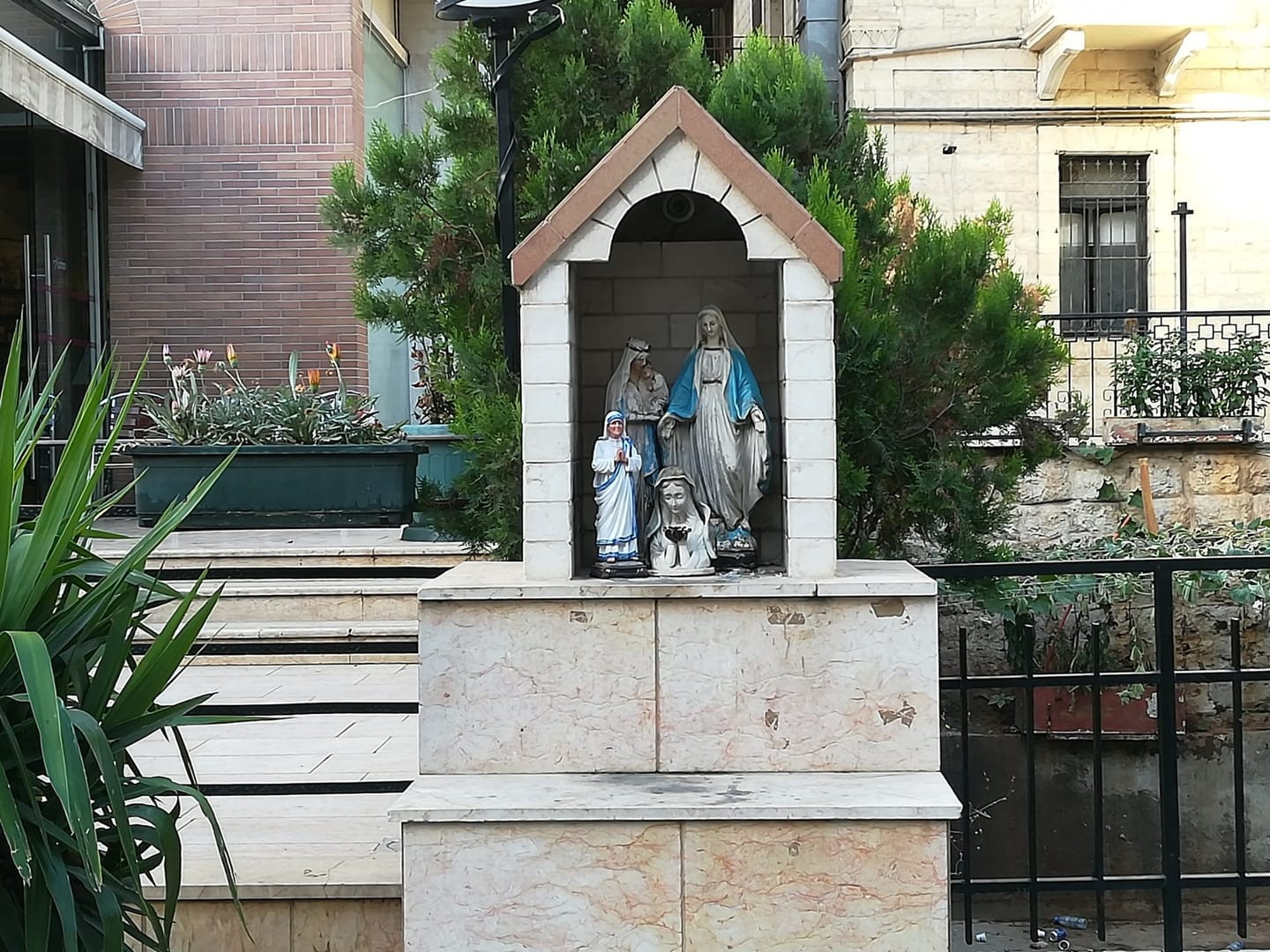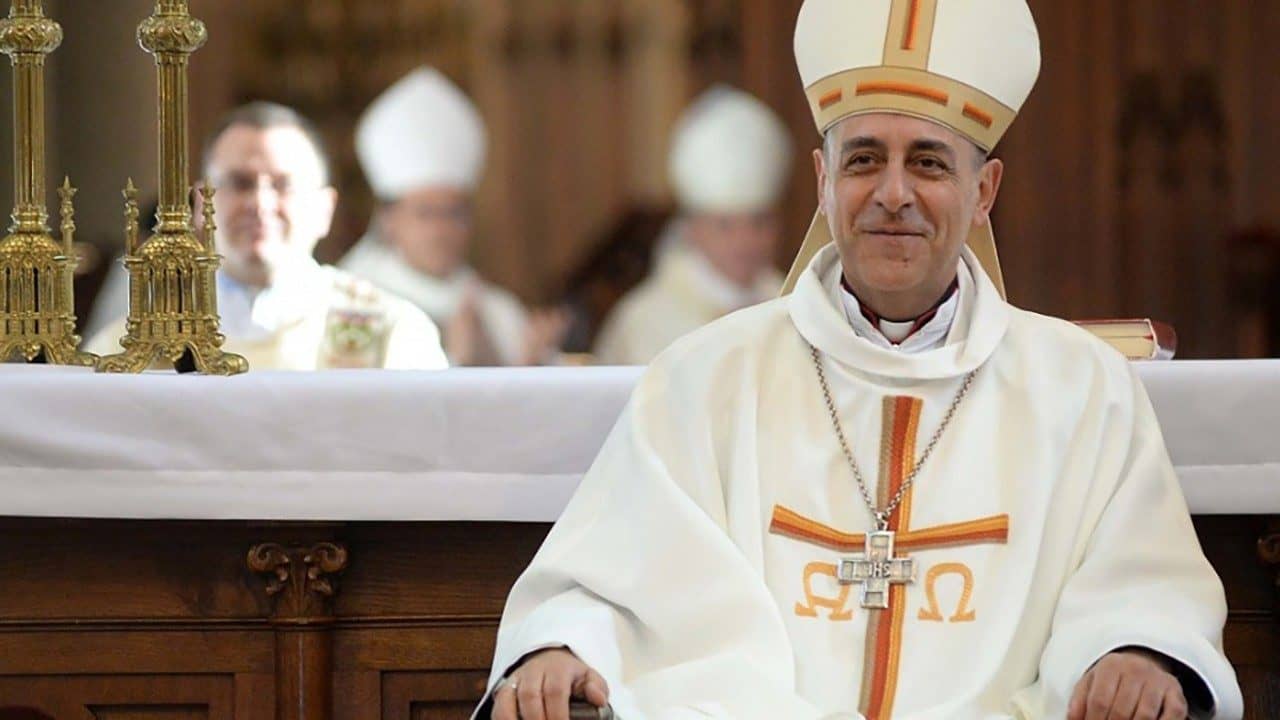ZAHLÉ, Lebanon – Many years ago, I briefly served as the vice-principal of a Catholic high school in Los Angeles. I occasionally took part in admissions interviews with students and parents. One of the points about which we were supposed to inquire was whether or not they were practicing Catholics.
Once I found myself seated across a desk from a Lebanese family looking to place their son at the school. At the time, I knew very little about Catholicism’s Eastern churches – I vaguely understood they existed, but I couldn’t have named any, and I certainly couldn’t have told you anything about their beliefs or histories.
Thus when I asked the family if they were Catholics and the father responded, “We’re Maronites,” I found myself asking, “Is that Catholic?”
The father smiled, filled with pride, and said: “Sir, we’re the most Catholic people there are.”
Later, I would learn the story of St. Maron and what would become of the Maronite Chruch, which considers itself heir to the Church of Antioch, one of the five great pillars of early Christianity. The early Maronites suffered violence and oppression for rejecting the Monophysite heresy, losing 350 monks in one fell swoop, for instance, in 450 A.D.
The Maronites would take to the mountains in Lebanon, putting down roots and stubbornly fighting off all comers – including Muslim invaders who rejected their Christianity, and Orthodox rivals who rejected their pro-Roman brand of Christianity. Through it all, the Maronites scrapped, held on, and refused to yield, clinging to their Catholic faith and identity –which is what the father I met that night had in mind.
(For the record, we accepted the son and he turned out to be one of the best students I ever had.)
In several ways, Lebanon is arguably among the most fascinating religious laboratory experiments in the world right now. Inés San Martín of Crux and I are in Lebanon this week, trying to bring those stories to light. The trip is part of a series of reports sponsored by Aid to the Church in Need, a pontifical foundation serving persecuted Christians around the world.
First, the Christians of this country – largely Maronite, but also Orthodox, Greek Melkite Catholics, Protestants, Armenian (Orthodox and Catholic), and others – represent a centuries-old Christian presence in the heart of the Arab world, and one that hasn’t fallen into a death spiral or been largely driven into exile.

Granted, there are maybe 10 to 15 percent more Muslims in Lebanon than Christians, but those Muslims are almost evenly divided between Sunnis and Shi’ites, so no one group can dominate.
Maronites today constitute around 21 percent of Lebanon’s overall population, the president of the country is still always a Maronite under the terms of the National Pact, and roughly a third of seats in the country’s parliament are still reserved for Christians.
Second, Lebanon is a real-time experiment for the possibilities in Christian-relations, both the good and the bad – and, occasionally, the surreal, such as the fact that current President Michel Aoun once led Christian militias in a bloody civil war against Muslim factions in Lebanon that supported a Syrian occupation, while today Aoun’s closest political ally is Hezbollah, and he’s on friendly terms with Damascus.
Consider that although the military wing of Hezbollah is officially designated a terrorist group in Washington, and in many places it would be considered a jihadist movement bent on eradicating any non-Islamic presence, a recent poll found that 62 percent of Lebanese Christians believe Hezbollah has been doing a better job than anyone else in defending Lebanese interests in the region, and they trust it more than any social institution other than the Maronite Church itself.
Third, Lebanon is also an object lesson in both the promise and the perils of welcoming refugees, and Christian reactions to both.
Per capita, no country in the world has welcomed a greater volume of refugees, now estimated to represent a quarter of the country’s population of around 4.5 million. In some Lebanese towns, there are now more Syrians than native Lebanese, despite the fact that the country bans formal refugee camps precisely to try to keep people from overwhelming any one location.
The Christians among those refugees, of course, streamed into Lebanon to escape what the U.S., the U.N., Pope Francis and others have all defined as a genocide, motivated in large part by religious hatred. They arrived in Lebanon expecting to be free from such oppression, and for the most part they are – which is not to say, however, they haven’t encountered other kinds of hostility.
The huge influx of refugees here has strained everything, including health systems, police capacities, the abilities of schools to absorb new students, even garbage collection. Inevitably, resentment has grown, with many Lebanese openly wondering why the Syrians don’t just go home now that portions of the country appear to have stabilized.
The punitive attitude is growing. Some towns in the Bekka Valley, home to large refugee populations, have proposed shutting down Syrian-run businesses, and tens of thousands of Lebanese have signed online petitions supporting the voluntary return of Syrians or outright expulsion.
In late August, thousands of refugees essentially were forced back across the border into Syria after Hezbollah liberated the town of Arsal from a Syrian militia, which was forced to accept the return as part of a cease-fire deal.
Lurking beneath mounting resentment to the country’s refugee population is the memory of the last time the country was forced to host a massive sudden influx of displaced persons, which was the Palestinian refugee crisis of the early 1970s, which helped plunge Lebanon into a bloody, 15-year civil war that no one wants to experience again.
For Christians, there’s also a different source of apprehension to add to the mix: Fear that too many Muslim refugees in the country might alter its delicate religious demography.
Two years ago, Patriarch Bechara Boutros al-Rahi, head of the Maronite Church and also a member of the College of Cardinals, controversially warned in an interview with the Italian magazine Famiglia Cristiana that Muslims aim to conquer through their higher birthrates. No doubt, he doesn’t want to see the Christian footprint in his country also placed under pressure from rapid immigration.
Perhaps as a result, al-Rahi has emerged as a leading skeptic of allowing Lebanon’s massive new Syrian refugee population to put down roots.
In July, in a homily delivered with Aoun in the congregation, al-Rahi warned that the “sufferings and concerns” of the Lebanese people “have been growing and growing in the presence of two million refugees and displaced people taking the living out of their mouths, throwing them into poverty and deprivation, and forcing our emerging generations to emigrate.”
More recently, al-Rahi has called the situation “unbearable” and suggested many of the refugees should be compelled to return to Syria, given that at least some sections of the country have been liberated and are now reasonably secure.
Some critics have suggested that al-Rahi is out of step with Francis’s broad message of welcome and acceptance for refugees, but of course the pontiff also has acknowledged the need for governments to act with “prudence” in terms of how many people they can reasonably integrate, and in any event, those critics haven’t walked a mile in the patriarch’s shoes.
If anyone were to put together a list of the top four or five issues most urgently defining the agenda in the early 21st century, surely pluralism, the “clash of civilizations” and the relationship between Islam and Christianity, and the challenges created by historically unprecedented numbers of migrants, refugees, displaced persons and “people on the move” would be among them.
Lebanon is a compelling test case for all three, and, for exactly that reason, the rest of us all have a rooting interest in seeing it succeed.














